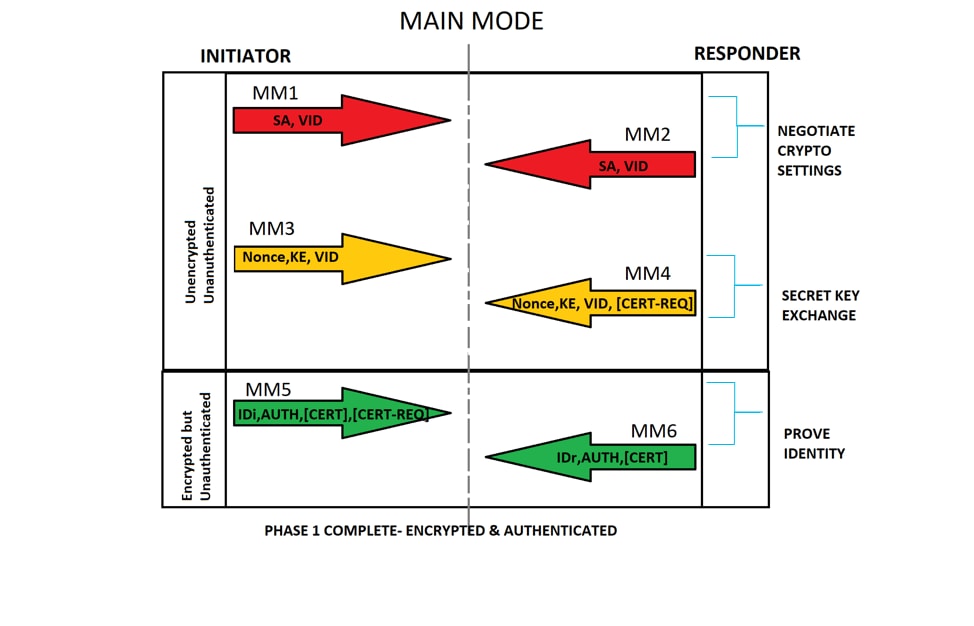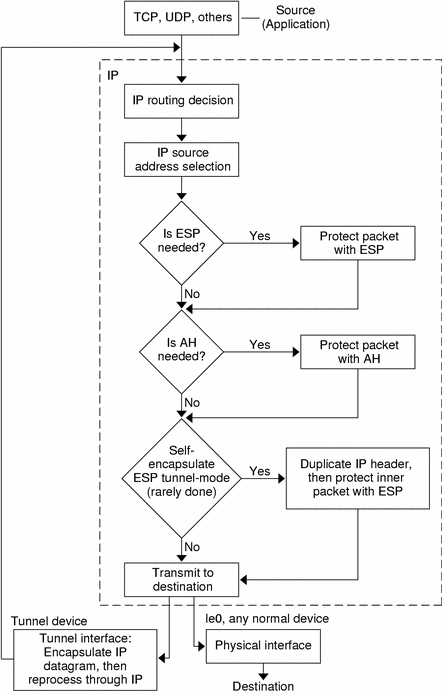Featured
Table of Contents
What Is Ipsec? How Does Ipsec Work?
IPsec authenticates and secures information packages sent out over both IPv4- and IPv6-based networks. IPsec protocol headers are found in the IP header of a packet and specify how the information in a package is managed, including its routing and delivery throughout a network. IPsec adds numerous components to the IP header, including security details and several cryptographic algorithms.

ISAKMP is specified as part of the IKE procedure and RFC 7296. It is a framework for crucial facility, authentication and settlement of an SA for a safe and secure exchange of packages at the IP layer. To put it simply, ISAKMP defines the security parameters for how two systems, or hosts, communicate with each other.
They are as follows: The IPsec process starts when a host system recognizes that a package needs protection and needs to be transferred utilizing IPsec policies. Such packets are thought about "interesting traffic" for IPsec functions, and they set off the security policies. For outbound packets, this implies the appropriate file encryption and authentication are applied.
Ipsec—what Is It And How Does It Work?
In the 2nd step, the hosts utilize IPsec to work out the set of policies they will use for a secured circuit. They likewise verify themselves to each other and established a safe channel between them that is used to work out the method the IPsec circuit will secure or authenticate information sent across it.

After termination, the hosts get rid of the private keys used during data transmission. A VPN basically is a personal network executed over a public network. Anyone who links to the VPN can access this private network as if straight connected to it. VPNs are typically utilized in companies to allow workers to access their business network remotely.
Generally utilized in between secured network gateways, IPsec tunnel mode makes it possible for hosts behind one of the gateways to communicate firmly with hosts behind the other entrance. Any users of systems in an enterprise branch office can firmly connect with any systems in the main workplace if the branch workplace and main office have protected gateways to act as IPsec proxies for hosts within the particular offices.
What Is Ip Security (Ipsec), Tacacs And Aaa ...
IPsec transportation mode is utilized in cases where one host requires to connect with another host. The 2 hosts work out the IPsec circuit directly with each other, and the circuit is normally torn down after the session is complete. A Protected Socket Layer (SSL) VPN is another approach to protecting a public network connection.
With an IPsec VPN, IP packages are secured as they travel to and from the IPsec entrance at the edge of a private network and remote hosts and networks. An SSL VPN safeguards traffic as it moves between remote users and an SSL gateway. IPsec VPNs support all IP-based applications, while SSL VPNs only support browser-based applications, though they can support other applications with customized advancement.
See what is best for your company and where one type works best over the other.
An Introduction To Ipv6 Packets And Ipsec - Enable Sysadmin
Each IPsec endpoint validates the identity of the other endpoint it desires to interact with, ensuring that network traffic and information are only sent out to the intended and allowed endpoint. Despite its fantastic energy, IPsec has a few concerns worth discussing. Initially, direct end-to-end communication (i. e., transmission method) is not constantly offered.
The adoption of numerous regional security regulations in large-scale dispersed systems or inter-domain settings might position severe issues for end-to-end interaction. In this example, assume that FW1 requires to inspect traffic content to discover intrusions which a policy is set at FW1 to deny all encrypted traffic so regarding implement its content evaluation requirements.
Users who utilize VPNs to remotely access a personal service network are put on the network itself, giving them the same rights and operational capabilities as a user who is connecting from within that network. An IPsec-based VPN may be created in a variety of ways, depending on the needs of the user.
Ipsec: A Comprehensive Guide - Techgenix
Due to the fact that these parts may stem from numerous suppliers, interoperability is a must. IPsec VPNs make it possible for smooth access to business network resources, and users do not necessarily need to utilize web gain access to (access can be non-web); it is therefore a solution for applications that need to automate communication in both ways.
Its framework can support today's cryptographic algorithms along with more effective algorithms as they appear in the future. IPsec is a mandatory element of Internet Protocol Variation 6 (IPv6), which companies are actively releasing within their networks, and is strongly recommended for Web Protocol Version 4 (IPv4) executions.
It provides a transparent end-to-end safe channel for upper-layer procedures, and implementations do not need modifications to those protocols or to applications. While having some disadvantages connected to its intricacy, it is a mature procedure suite that supports a series of file encryption and hashing algorithms and is extremely scalable and interoperable.
Ip Security (Ipsec)
Like VPNs, there are many ways a No Trust model can be carried out, but services like Twingate make the process substantially easier than needing to wrangle an IPsec VPN. Contact Twingate today to find out more.

IPsec isn't the most common web security procedure you'll utilize today, however it still has an essential function to play in protecting internet interactions. If you're using IPsec today, it's most likely in the context of a virtual personal network, or VPN. As its name suggests, a VPN develops a network connection in between 2 machines over the public internet that's as safe and secure (or nearly as protected) as a connection within a private internal network: most likely a VPN's a lot of popular usage case is to allow remote workers to gain access to secured files behind a business firewall as if they were working in the workplace.
For many of this article, when we say VPN, we indicate an IPsec VPN, and over the next several areas, we'll discuss how they work. A note on: If you're looking to set up your firewall software to enable an IPsec VPN connection, be sure to open UDP port 500 and IP ports 50 and 51.
How Does Vpn (Ipsec) Work?

When this has actually all been set, the transport layer hands off the data to the network layer, which is mainly controlled by code running on the routers and other components that make up a network. These routers decide on the path individual network packets take to their location, but the transportation layer code at either end of the communication chain does not require to understand those details.
On its own, IP does not have any built-in security, which, as we noted, is why IPsec was established. Today, TLS is developed into essentially all browsers and other internet-connected applications, and is more than sufficient security for daily web usage.
That's why an IPsec VPN can include another layer of security: it includes securing the packets themselves. An IPsec VPN connection starts with establishment of a Security Association (SA) in between two interacting computer systems, or hosts. In basic, this includes the exchange of cryptographic keys that will permit the celebrations to encrypt and decrypt their interaction.
Latest Posts
The Best Popular Vpns For Business In 2022
5 Best Vpns For Warzone — Get Easy Bot Lobbies In 2023
12 Best Vpn Service Providers In 2023